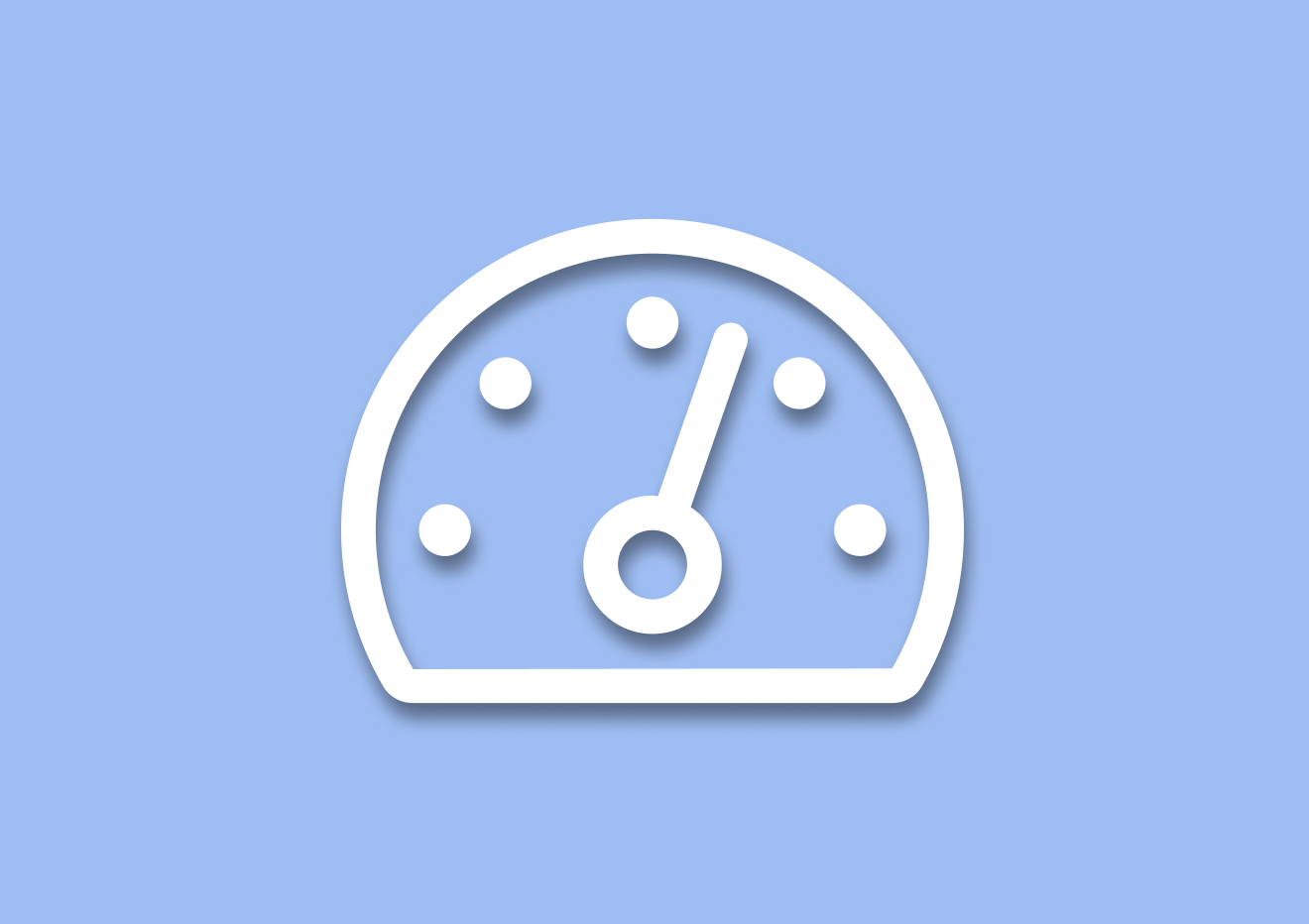How to Improve NPS Score
Want to improve your NPS scores?
Good news, then. You’ll find detailed guidelines on how to do it below.
Here’s what we’ll cover.
So, what is a Good NPS Score?
I hear this question all the time. Our users and prospective customers often reach out asking what NPS score they should be aiming for. Or whether they should be content with the score, they got recently, and so on.
Unfortunately, there is no simple answer to this question. Benchmarking NPS is challenging, partially because of two reasons:
- Many factors can affect the NPS score. (More on this shortly in this guide) These factors can differ from one business to another. Many products are challenging to use, for example, and will naturally demand more from customers. These people might not be as understanding about it, and thus, rate those products lower.
- Various aspects of the industry the company operates in will affect how customers rate your business. For example, some industries are plagued with dissatisfied customers. As a result, those companies often get low NPS scores by default. And that’s regardless of how well they try to satisfy customers. As a result, some industries are ripe for word of mouth, but in others, customers rarely even think about recommending companies to others.
For those reasons, NPS scores can vary dramatically between companies, even those operating in similar industries. As a result, establishing whether you received a good or bad NPS score may rely heavily on you rather than comparing your performance with others.
Here are some of the best ways to evaluate your NPS score:
- In general, the higher the score, the better, of course. But don’t get discouraged if you’re not reaching the top marks. A mid-range score might still be good, depending on your industry or your product type. In fact, only two years ago, Forrester Research published a benchmarking study of NPS scores across industries. The company discovered that, on average, businesses in their research scored between 59 to -47, far from the top marks you might have expected.
That said, I don’t say that you should be satisfied with a low score. But certainly, you shouldn’t be discouraged if your score does not fall in the 90+ bracket. - Use industry benchmarking data. It’s true – industry NPS benchmarks might not paint the whole picture for your company. However, the data might highlight the average NPS score companies similar to you receive. This, in turn, could indicate whether you perform on an average or higher level.
- Listen to your gut feeling. Ask yourself, does the score you got “feel good” to you? Or are you unhappy about the result? Sometimes, the gut feeling is the best way to evaluate whether you are where you should be or need to improve your NPS score.
- Review customer feedback. Finally, look at what customers say about your business. Such feedback can reveal quite a lot about how your company meets customer expectations. For example, if the majority of your feedback is negative, your score is, most likely, too low. If you’re getting good reviews, on the other hand, you’re most likely on the target with your score.
The strategies above help with establishing whether you should worry about your score or not. What follows in this guide are the best practices to implement should you decide that your NPS score is too low and needs a boost.
A quick note before we proceed further: NPS is a vast and complex metric that can highlight positive or negative experiences a person might have had with many aspects of your business or product, from customer service to product usage and more. The list you’ll read below contains a comprehensive list of strategies to improve an NPS score. Not all of them might be relevant to your business or current situation, though. But sift through them all anyway; you will find some that you’ll be able to implement in your company right away.
What factors can affect NPS scores, typically
If there’s one thing to be said about NPS scores is that it’s a complex metric. There isn’t one thing that you can positively name as the factor that determines how customers will score your brand.
Here are just some of the factors that can contribute to lower NPS scores (and similarly, if you tackle those, they can help you improve the NPS):
Product performance. An obvious factor, I admit, but still one that requires a mention. Because let’s face it, if your product doesn’t meet customer expectations, they’ll be less likely to give you a higher NPS score. Similarly, product downtime, technical issues, poor UX, and other similar factors might cause low NPS scores.
Ignoring the voice of the customer. Detractors (or potential detractors) are often the first people to start offering feedback. Granted, they might not offer it to you. But they might start voicing their concerns about the product or its performance elsewhere online.
Listening to their feedback can help you uncover many potential reasons for low NPS. And acting on it might even turn some of those detractors into promoters, increasing your NPS scores in the process.
Poor customer feedback collection and survey design. Your NPS survey might also be designed in a way to entice more negative feedback. Or you might be asking the too generic (or too specific) question, resulting in only detractors responding. In turn, this could result in data being skewed towards the negative score.
So, what to do about it? Well, here are 12 ways to help you improve your NPS.
12 Strategies to Improve NPS Score
#1. Ask for NPS feedback at the right time
This may seem like obvious advice but think about it. How many times have you seen NPS widgets appearing at the completely wrong time?
Perhaps you only signed up for a product and never even had a chance to test it out. Yet, the company has asked you for feedback already.
Or maybe you haven’t been using the product for a long time. But suddenly, an NPS score arrives in your email. As a user who might have abandoned using the product, what are the chances that you’re going to provide valuable feedback?
And that’s the trick to this advice. You see, measuring NPS at the wrong time often results in insufficient data. For one, customers might feel annoyed by your request and score you lower than they usually would.
But when you ask for feedback at the right time in the customer’s journey, you get the actual land highly valuable insights into their satisfaction and loyalty.
#2. Provide a good survey UI/UX
This is somewhat related advice. Poor survey experience typically leads to either low response rates or poor quality data.
As a matter of fact, in our research, we’ve discovered that with poor survey experience, the majority of replies you get are from highly disappointed customers. Perhaps it’s because these people are so enraged by the service they’ve received that nothing stands in their way of expressing that sentiment.
The thing is – With NPS surveys, you want to hear the voice of all customers, not just the unhappy ones. You want the survey to reveal the whole spectrum of promoters, passives, and detractors in your customer base.
Needless to say – Improving the overall user experience is one way to increase the quality of the data you receive.
#3. Use visual cues to explain the rating values
I admit it – This is a tricky one. You see, often customers rate their likelihood of recommending you to others as 8, for example, only because they think that that’s a good enough value.
The choice might have nothing to do with their actual sentiment towards your business. Instead, it’s more about how they perceive the rating question in the survey.
There is nothing wrong with such perception, of course. But unfortunately, it might affect your actual score.
The solution – Use visual cues to explain the strength of different values in the survey. For example, color the two top values – 9 and 10 – in green when a person’s mouse hovers over the rating scale. This will suggest that those two values correspond with the highest satisfaction levels.
#4. Close the loop with detractors to uncover reasons for their low score
An NPS survey is not just an opportunity to evaluate your customer’s experience (CX.) It’s also a chance to dig deeper and uncover the context for their score and feedback.
This is particularly important when it comes to detractors – customers who aren’t satisfied with your brand and admit not to be interested in recommending you to others. At least, not in a positive way.
Anytime you have someone rate you anywhere between 0-6, make a note to follow up with them. Inquire more about their complaint. Then, work with the customer to fix the situation. Not only might you repair the relationship, but you’ll also learn more about the reasons for the person’s dissatisfaction with you.
And let’s face it – Sometimes, such blunt and harsh criticism are all that you need to see the problems within the business.
#5. Interview promoters to identify areas where you excel
It’s not just detractors and their negative feedback that can drive customer satisfaction. Promoters, customers who are absolutely delighted with you and rate you between 9 and 10 on the NPS survey, can provide amazing insights.
Reach out to them too. Find out what they love about your brand or product. Discover the areas where you excel.
Then, identify why you excel in those areas and use that insight to improve the other aspects of your business.
#6. Improve consistency of service
This is a no-brainer, isn’t it? Customers interact with you in many ways – From their pre-purchase research, customer onboarding, experience with the product to dealing with your customer support team.
Needless to say, the more consistent their experience is, the more likely they are to feel satisfied and happy to tell others about it.
The opposite is true as well. Customers will feel confused facing a struggle with various touchpoints, while others have seemed so effortless. Similarly, they’ll be equally confused when experiencing slow support response times after a fantastic sales experience.
As a result, these people may be less likely to rate you well on the NPS score. And that’s just because of the lack of consistency with your service.
#7. Get internal buy-in for NPS
FACT: It’s hard to improve an NPS score with only part of the company dedicated to the process.
Unfortunately, a lack of buy-in for NPS is frequent in businesses. Not all managers understand the value of an NPS score and its benefits to improve customer satisfaction. As a result, many activities aimed at improving the NPS get little to no traction.
The only way to turn this around is to rally the company around the importance of getting good NPS scores.
Run regular meetings around NPS. Educate other managers about what NPS is, what it means, and how it affects your company’s opportunities for growth.
It might be a long process. But it’s beyond critical, and the benefits such buy-in offers far outweigh the effort you might need to spend to get it.
#8. Train staff around common NPS issues
When you dig deeper into your NPS scores, you often discover specific issues that turn happy customers into detractors. These could relate to customer support, product features, and more.
And it’s true – Eliminating those issues might be a long-term project. All the while, you need to improve the NPS score right now.
An interim solution is to train your staff to deal with those issues fast and efficiently.
Build processes to tackle issues most commonly referenced in NPS feedback. This might not prevent those issues from happening. But speeding up their resolution will certainly turn a few customers around.
Hold regular meetings around NPS too. Do it even to keep those issues fresh in everyone’s minds. Again, it could help alleviate the situation in the interim until you’ve eliminated those issues completely.
#9 Run segmented NPS surveys to uncover specific areas in the business that drag the score down
Seeing a low NPS score can set you off to try and fix things out. But what exactly needs fixing?
Sometimes, customer feedback and responses to the follow-up question might reveal that. But unfortunately, they can also leave you more confused than before.
Luckily, there is a way to probe deeper and uncover specific areas of the business that drag the score down – Running small, segmented NPS surveys.
These surveys work just like any other NPS survey. The difference? Well, you either send them to a specific group of people or inquire about a specific area of your business (or both.)
For example, you could send the survey only to customers who have reached out to your support team in the last 30 days and ask them to rate you based on that experience only. Or you could ask your power users about their attitudes towards the support. The opportunities for segmenting NPS surveys are endless, actually.
#10. Improve the product or company operations based on recurring NPS feedback
Here’s simple advice on improving NPS scores – Use what you hear from customers over and over again as a starting point to building your roadmap for improvement.
You see, when you’ve run NPS surveys for quite some time, you’re bound to notice recurring themes in the feedback. These might not be negative stuff, by the way. The point is that you will hear some feedback more often than others.
These comments from customers will highlight issues, of course. But they can also provide you with an initial roadmap as to what to improve in the company’s operations.
The key to using this advice well is to run NPS surveys frequently.
#11. Use NPS data to improve customer support
Support is one of those areas that customers complain about the most.
It makes sense. Nobody reaches out to support unless they have already experienced a problem, after all. And that’s hardly a situation when you’re happy and satisfied with a product. Your attitude, therefore, is bound to be negative.
Running an NPS focused on customer support can deliver quite an insight and ideas on what to improve.
Because of the nature of support interactions, such customers are likely to be more vocal about their problems and their experiences with getting them resolved.
#12. Run regular NPS checks to evaluate progress
Finally, set up a schedule for running NPS checks to evaluate your progress. This is the only way to know whether your efforts to improve the NPS score bear any fruit.
When running NPS checks, resend the same survey to the same audience segment. This way, you’ll be able to evaluate your efforts fully and get the most accurate data on your progress.
What’s more, the survey will also deliver insights into any new and emerging issues that you might need to address as well.
Conclusion
Not many other customer satisfaction survey types beat NPS when it comes to uncovering how satisfied and loyal customers are to your brand, product, or service.
Similarly, nothing beats the feeling you get when you see top NPS scores in the survey results.
But often, you may find that you have to work on improving the results. And in this post, I shared with you the 12 best ways to get better NPS scores.
What’s left now is to start implementing the ones that are relevant to your business.
Good luck.









